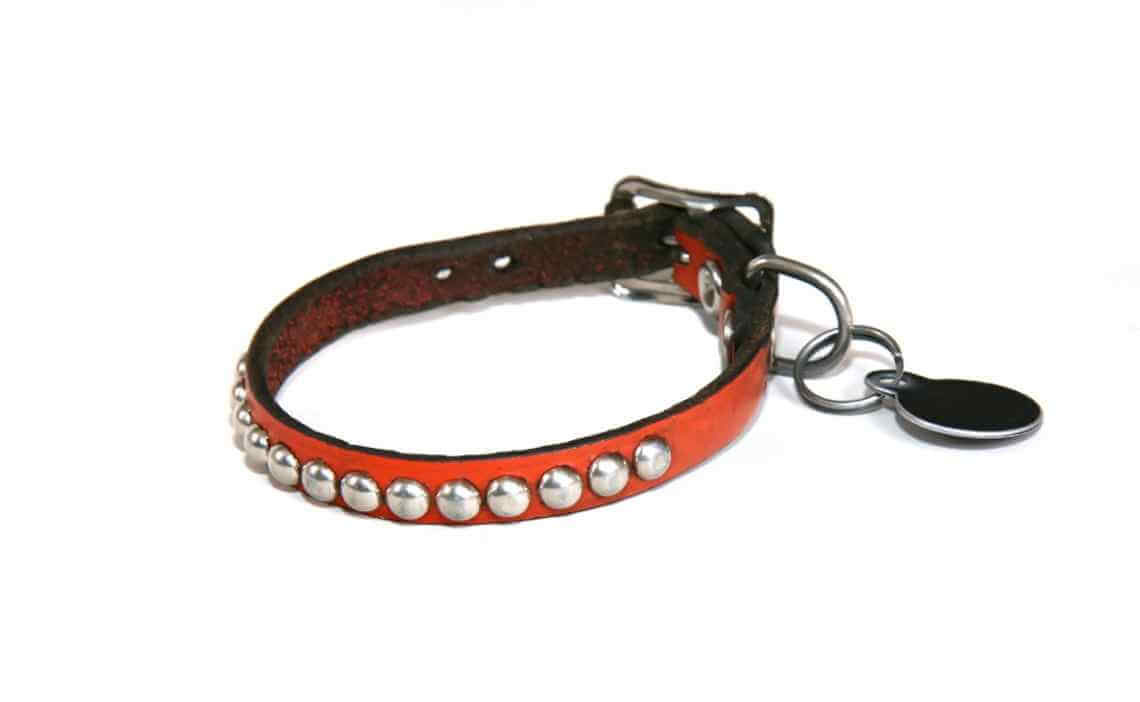 National Pet ID Week (April 17 – 23) is a good opportunity to check your dog’s identification (ID) tag and microchip.
National Pet ID Week (April 17 – 23) is a good opportunity to check your dog’s identification (ID) tag and microchip.
The lost dog problem in the U.S. is enormous. It is estimated that one in three pets will be lost at some point in their life. About 4 million dogs enter shelters each year, and of those 40 to 60 percent are lost pets. It’s important to reunite pets with their owners as quickly as possible to help reduce shelter crowding and free up valuable resources for truly homeless animals.
A study published in Preventative Veterinary Medicine reported that only 33 percent of owners keep ID tags on their pets. If you’re one of the 67 percent who sometimes, rarely or never keeps an ID tag on your dog, consider this: tags significantly improve your chances of getting your dog back if he or she is lost. The return rate for pets is generally between 10 to 30 percent in most areas of the U.S., but personalized ID tags can greatly improve the return rate and assure your lost pet is returned to you.
We love our furry companions and want to make sure we are doing everything possible to keep them healthy, happy and, most importantly, safe. Despite new technology to help us find lost pets, we shouldn’t forget about old-school methods, like an identification tag. Even if your dog is microchipped, he still needs an ID tag. Vets and shelters can scan for chips, but collar tags are still the fastest way for someone to reach out to you in the event your dog is separated from you.
Every dog should wear a visible ID tag and be microchipped by a reputable provider. (Click here to read more about microchipping your dog.)

What Info Should Appear on Your Dog’s ID Tags?
Here’s what you should check for when it comes to your dog’s ID tags.
- Is the tag in good repair? If not, it’s time to replace it.
- Are the tags readable? Or are they too scratched and worn to be read? If they’re not legible, time to replace them.
- Does the tag have essential information listed on it, such as your best phone number? For most people, it’s their mobile phone number. Some people include their address, but often there isn’t that much room on a tag. Plus, many people aren’t comfortable having that much personal information on the tag.
- If your dog is microchipped (and he or she should be!), you should attach a second tag to your pet’s collar that lists the microchip provider’s contact information.
- Finally, it’s a good idea to have your dog wear his or her proof of rabies vaccination to let whoever finds her know that she’s up-to-date on her immunizations. The number on the rabies tag is another way someone can identify your dog and find you.
Should You Include Your Dog’s Name?
It’s not something you want to think about, but sometimes dogs are stolen. If you are concerned about someone taking your dog you might not want to include his or her name on the tag. Some people feel knowing the dog’s name makes them easier to steal. In general, adding your dog’s name doesn’t do much for solving a lost dog situation.
If you decide you want to include your dog’s name, put whatever your dog is used to being called. If you call your dog by a certain a nickname, use that.

Microchipping
Microchipping your dog is a safe and effective way to ensure you’re the first person contacted in the event he or she ends up in a shelter. We recommend you do this sooner rather than later. It’s a good idea to engrave “Microchipped” on the ID tag. This lets anyone who finds your dog know he or she can be traced back to you. It also lets any unscrupulous person know they should refrain from taking your dog because they can be tracked back to you.
Tracking Technology
As mentioned before, new technology has added to the array of lost pet identification. Here are three top tracking technologies, in no particular order:
Unique ID Tag Options
If you’re in the market for a new dog tag, or you need to replace an old one, here are some of our favorite dog ID tags for you to consider.
This is a basic, no frills ID tag that’s rectangle-shaped to allow more room for engraving. You can choose different colors and there are 6 lines on the front of the tag (20 characters each line) and text on the back on the tag as well (for $3 extra).
Cost: $4.99
This customized dog tag reads “have your people call my people” on the front, with your name and number (or two phone numbers) on the back.
Cost: $12.50
Dynotag is a QR (Quick Response) and NFC (Near Field Communication) enabled pet tag. You will receive an email if someone finds your pet and scans the QR on the tag. In addition, you will receive the location of where the scan occurred. You can add as much information to the registration as you like (pet’s name, medical history, vaccinations, special considerations like “chases cats” or “afraid of machine noises”, veterinarian contact info, favorite food, reward for returning your pet, etc.)
Cost: $17.45
If you’re looking for a fashionable option, check out Bloomingtail’s lineup of ID tags. They have a large assortment that will help you express your dog’s personality and style.
Cost: $17.99
We love that this ID is silent! No more jangling tags. The laser-engraved, stainless steel tag is attached to rubber rings on each end, making it easy to slide onto any collar. The ROAD Pet iDs boasts a lifetime guarantee and is available in a variety of colors.
Cost: $19.99
Tags for Hope is a nonprofit organization that donates to a no-kill shelter for each ID they sell. These IDs are not a typical dog tag. Instead, they are similar to a small-sized driver’s license, displaying a picture of your dog and other information.
The ID cards are encased in plastic and are backed by a lifetime guarantee. You can also order a wallet card for you (the owner), making it easier to prove you are the pet’s rightful caretaker.
Cost: $23.00
This Etsy bestseller is a combination dog collar and ID tag. These collars come in many designs and sizes; the engraved text is next to the buckle so no need to add an ID tag. While these tags don’t leave much room for text, they are noise-free and great-looking!
Cost: $41.45
There are many more unique dog tag options available online. Try checking out Amazon, Etsy or Google for many more fun, interesting and distinctive ideas.

Taking a few minutes today to check your dog’s ID tags and microchip information could save you heartache if the unthinkable happens and you lose your dog. No ID tag? No microchip? Now’s a good time to take care of your dog’s need for identification.
What unique dog ID tag do you think should be included in the above list? Please share with the rest of the Canine Campus community in the comments below…














Leave a Reply